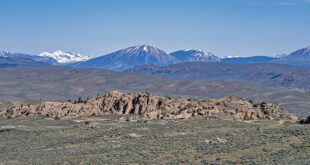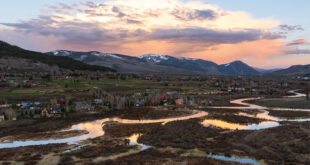Last weekend, I attended a management course for journalists at the University of Missouri-Columbia. A fair amount of our course was spent discussing how the newspaper industry can combat the staggering losses it’s seen in recent months as advertisers turn away from traditional advertising in favor of the digital world. It’s generally agreed that newspapers are flailing because publishers and editors failed to recognize that the Internet would challenge their dominance—even though analysts have been warning that it was coming for more than 20 years.
To get from Point A (the right now) to Point B (a future with newspapers), one professor described the strategic plan process for businesses that managers employ when they’re trying to get things done. The recommended strategy for newspapers is to cut spending on traditional advertising departments, beef up web presence and spend more money on the quality editorial content that readers can’t find on any Joe Schmoe’s website. That will, in turn, draw readers to newspaper websites and traditional print.
Starting yesterday, there’s some strategic planning of an entirely different kind happening here in Gunnison County. Local residents and leaders are debating how Gunnison County will get from Point A (a world dependent of burning fossil fuels) to Point B (a community where we no longer take those resources for granted).
The debate is taking place at the Gunnison Valley Energy Summit, hosted by the Office for Resource Efficiency (ORE). It kicked off last night with a keynote address at the Center for the Arts. Today (Thursday, September 11), ORE is sponsoring energy planning work sessions at the Aspinall-Wilson Center in Gunnison.
This might seem like pretty dry stuff. Even the words “strategic plan” seem to ooze corporate culture that we came to Crested Butte to escape. And who wants to spend a September day indoors?
But this kind of planning is where the rubber meets the road and how things get done.
For several years, we’ve heard about why communities and individuals need to cut energy consumption to reduce our impact on the earth. ORE and local governments took the first step of ascertaining roughly how much greenhouse gas that Gunnison County is pumping into the atmosphere every day with a comprehensive assessment.
It’s now our job to reduce that number.
To help us get from Point A to Point B, ORE has assembled experts, leaders, and community members to brainstorm ideas on energy use reduction. Those conversations will be good and if you can, I encourage you to go.
If you can’t attend the meeting, you’re still responsible for this process. In watching local government for the past several years, I find it infuriating when citizens and staff members put time and money into a planning process—only to have the results shelved to gather dust. (The Crested Butte Arts and Recreation planning process comes to mind, but never mind.)
Once a strategic plan is developed to address our energy use, it will be up to each of us to ensure that it’s implemented at the government and personal level. This is no small task. As I also learned at my management seminar, change is not easy for anyone. It’s much easier to do what you’ve always done and not switch money around to reflect new priorities or the changing reality of a flat world marketplace.
It feels safe to stay the same, even though it may be anything but—and it’s certainly not profitable, in the newspaper industry’s case.
The United States is facing a country without daily newspapers because the industry failed to plan, even though experts spent years telling them that they had to adapt. Instead, they choose to bury their heads in the sand and hope for the best.
That’s not going to work in this case. We’re in the driver’s seat on whether Gunnison County will adopt to the new energy economy and it’s up to us to make sure we’re prepared for what comes next.
-Aleesha Towns
Check Also
Impressed with Hurd
The current political reality in Gunnison County and Crested Butte is we are an island …
 The Crested Butte News Serving the Gunnison Valley since 1999
The Crested Butte News Serving the Gunnison Valley since 1999





